Okay, I would want to say that I don’t particularly dislike any particular design, but that would be essentially lying to myself. I find most sets designed today fall into one or two designs: standard and gacha. These aren’t real terms. I made them up myself.


My definitions of the standard and gacha sets aren’t exactly set in stone. There are also a subset of series that fall under the Bunko category. For those not in the know, Bunko (文庫) can be loosely translated into a book collection or a serialized writing collection. I will explain more on that later. Beginning with standard sets, these are the most common sets and apply to most series. I will say that a series can have both standard and gacha sets as is the case of our example here with Revue Starlight on the right. Standard sets follow the main storyline of the series that it is based upon. Most cards reflect a certain scene from the series or showcase a character in concept art. The designs are generally built around following or building off of certain synergies related to the themes of the series.
Gacha sets, on the other hand, are relatively new. Gacha sets have existed in the past but not as much in their current number in the present day. Gacha sets don’t usually have any particular flowing theme to them. Their cards are more varied and typically depict gacha game assets. Characters, in general, are limited to a single card within the series. They don’t normally provide any specific flow, but even if they do, it feels more like a jumble of cards that just seem to fit together rather than being related in “storyline canon.”
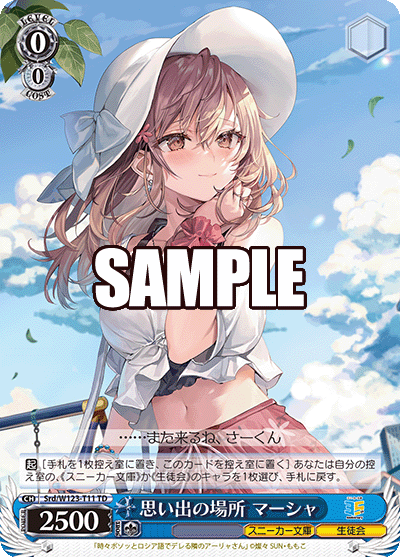
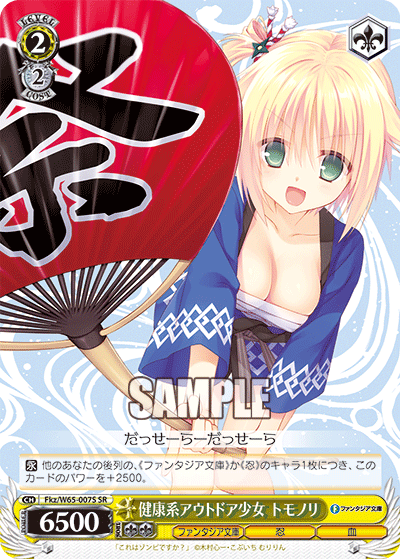
Fkz/W65-007S-SR 健康系アウトドア少女 トモノリ (right)
If you know me in real life, you’d know I am not a fan of Bunko series. The biggest flaw I have with these sets is that they support a large variety of series while not giving enough support to each individual title within their sets. In essence, they feel like a grab bag sort of design. Furthermore, support is not equal among the many titles within these series. One individual series may have enough cards to support a full deck while another may only have two or three cards. Even among the series that have enough cards to support a full deck, there’s often very little flexibility compared to standalone set. I personally have trouble designing around these series as I find their deck designs to be rather bland. It feels that you’re more often just stuffing cards that seem to sound good together. Since everything is essentially united by a single Bunko trait anyways, you can supposedly fit Alya from Roshidere with Megumin from Konosuba. They feel like a moshpit card version of Super Smash Bros.

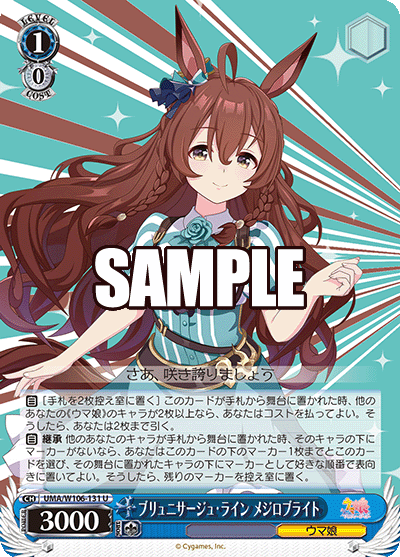
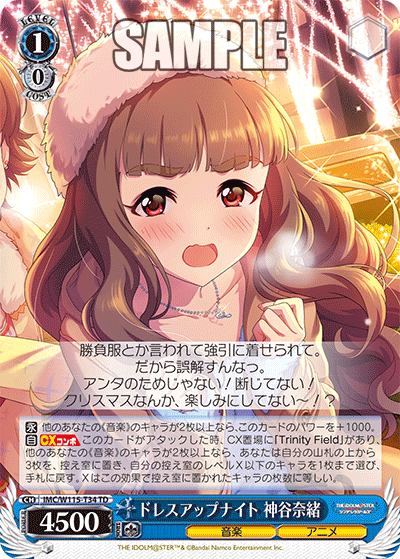
UMA/W106-131U ブリュニサージュ・ライン メジロブライト (center)
IMC/W115-T34TD ドレスアップナイト 神谷奈緒 (right)
I sound rather hypocritical considering many of my posts and even the decks I own come from “gacha” sets. Once again, I want to remind the reader that these categories are rather arbitrary and do not apply to every series. Even in series that I own that are “gacha” based, I find it difficult at times to really build and justify my builds. For instance, Kantai Collection only really has some loose theme designs. The series really allows you to build anything that just works together as long as you fulfill their requirements. Uma Musume is another example. I love the horse girls, but I find the lack of any true direction kind of bland. I own several decks for Uma Musume such as a fun Daiwa Scarlet/Vodka swapping deck without a finisher combo. I placed Cinderella Girls here as an example of an oddity. Cinderella Girls falls into this strange pseudo space between what I’d call a standard and a gacha series. At its core, Cinderella Girls is a gacha series (original material) but the series displays semblances related to some standard series (there are some general hints at deck building requirements). Still, I would generally put it in the space of a gacha series simply because, even among its main gimmick of colour locking, most of the characters involved in the colour (while following the general the three in-game categories of cute, passion, and cool) are rather random. Given the general nature of the original content, it does feel a bit canon, but it is still kind of strange.


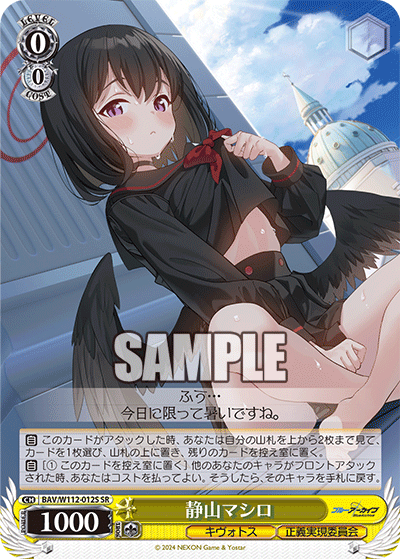
NIK/S117-087EX-SEC+ “失楽園”ドロシー (center)
BAV/W112-012S-SR 静山マシロ (right)
Compare that to say these above series. Mirrorverse is a clear gacha bag set with the most random combination of characters to say the least. With little to no direct mentions or specified requirements, you are left to whatever whim you come up with. The same goes for a series like Nikke or Blue Archive. Take Dorothy’s deck for example. The only requirement is that you play cards with soul icons. 2/1 Privaty works phenomenally in the deck but Dorothy and Privaty have little to no interaction in the original series. Even in something like Blue Archive, while there is a core to work with in terms of Trinity General School, you have to substitute cards from Gehenna in even though the two are essentially rival schools. These synergies don’t make much sense thematically. There are these side traits outside of the universal trait, and while Nikke is clearly separated into squads, these squads don’t really mean anything. They may have one or two similarities or form a quick synergy, but its nothing you can really build around.
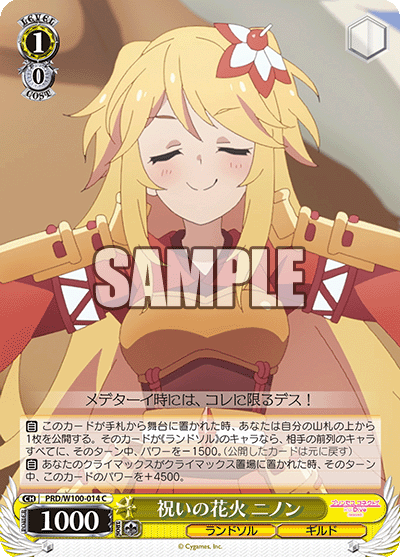
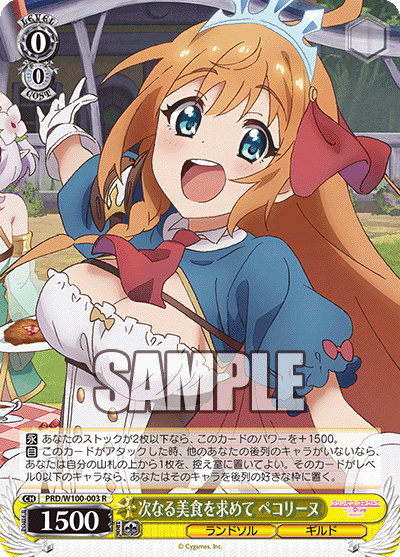

PRD/W100-003S-SR 次なる美食を求めて ペコリーヌ (center)
PRD/W100-012S-SR 王都決戦 シオリ (right)
Even in one of my dearest decks that I hold close to my heart, the deck doesn’t really make much sense when combined together. Bushiroad’s rather inconsistent designs makes it quite frustrating to put decks together at times. One big part of this is just the generalization of design and the constant lazy use of universal traits. While I did want to build my deck above with Shiori and Hatsune, they are merely turned into the main focus of the deck. Pecorine and Ninon are cards that act as supports, but thematically, they are just cards that work well with the deck I have in mind. Neither directly supports Hatsune and Shiori, but they act more as just good cards to fill up additional slots.
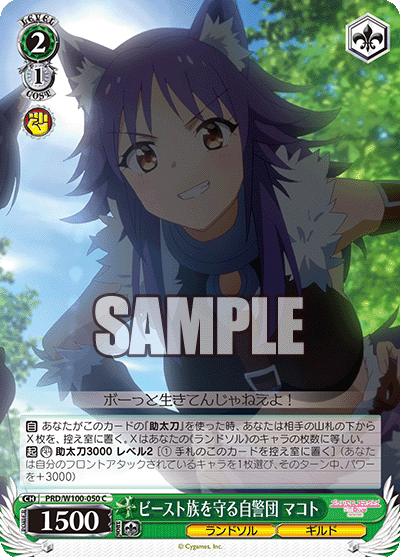
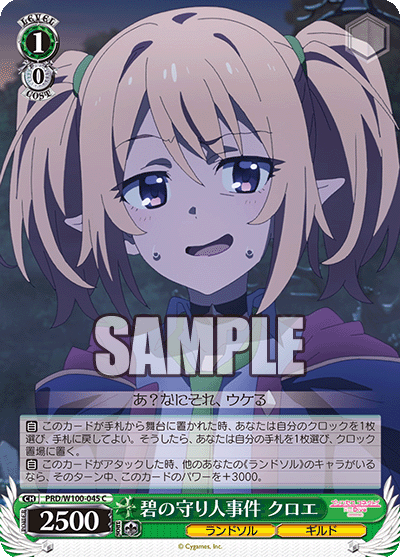

PRD/W100-045C 碧の守り人事件 クロエ (center)
PRD/W100-048C 島の調査 カスミ (right)
Compare this to say the Caon and Nakayoshi Club deck. In this deck, the general theme and synergies are clearly outlined. 1/0 Kasumi quite literally gives you a free climax swapper as long as you swap between 1/0 Kaori and 3/2 Yuni’s climaxes. Furthermore, with most of Nakayoshi’s Club’s cards being level one or higher, this carries great synergy with Caon’s general favoured connection to level one or higher cards, helping you nab cards such as Yuni’s 1/1 event. 1/0 Kaori generates the much needed stock to help with early playing 3/2 Chieru, which in turn summons your end game, 3/2 Yuni. It’s quite a cohesive deck. Could it use more modern support tools? Could you splash in other cards unrelated to the two guilds? Absolutely. But as a baseline, the deck above at least gives you something to work with, a starting point.
In conclusion, I hope my thoughts about certain set designs that I dislike with my rationale behind this decision. If I very much enjoy the IP, I will probably buy into the set and build around my favourite characters or a specific idea, but I would much rather enjoy the more simplistic and streamlined design of standard sets. To me, the beauty of Weiss really lies with the memory and recollection of a favourite scene or moment in a series. While gacha and Bunko sets may look nice and offer much more variety in terms of characters and designs, I still find simplicity is best. Sometimes less really is more.